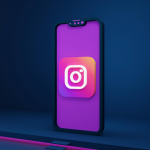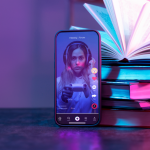As we hurtle towards 2024, it’s time to take a close look at the evolving landscape of visual trends. They’re more than just eye candy; they’re powerful tools that can shape and amplify your marketing strategy.
In this dynamic digital age, staying ahead of the curve is essential. That’s why I’ve put together a list of 8 visual trends you’ll want to keep an eye on. These trends could be the game-changers your marketing strategy needs to make a real impact in 2024.
Analyzing the Importance of Visual Trends in Marketing
First off, it’s essential to comprehend the direct impact that visual trends exert on marketing strategies. Because perception holds a significant role in consumer psychology, understanding evolving visual trends becomes crucial for marketers. For instance, in 2023, eye-catching color gradients rose to prominence, replacing the previous trend of flat design. Marketers – quick to leverage this – integrated vibrant gradients in their campaigns, yielding notably higher engagement rates than before.
Moreover, visual trends dictate the aesthetics of marketing materials. Consider the popularity of minimalistic design in recent years. Showcasing visuals that are clean, simple, and uncluttered, this trend has dictated everything from website designs to product packaging. For example, Apple’s emphasis on sleek, minimalist design not only notably increased its product appeal but also resonated with its target audience’s aesthetics, affirming the style’s importance in marketing.
Another compelling reason to track visual trends lies within their capacity to generate better user experiences. Interactive visuals, one of the rising trends in 2023, proved to be far more engaging for customers, as it involved them in a two-way interaction rather than a one-sided conversation. Evidence of this was seen in the surge of interactive infographics where users could customize the display of data, leading to a more personalized and engaging experience.
Lastly, staying informed about current and upcoming visual trends provides marketers with an opportunity to stay ahead of the curve. By incorporating groundbreaking visual styles into their marketing strategies, brands can differentiate themselves from competition, generate stronger brand recognition, and drive conversion rates effectively. An illustrative case was when brands in 2023 started using ephemeral content (content that vanishes after 24 hours), originally popularized by Snapchat, in their marketing strategies. This trend drove higher user engagement as consumers felt compelled to view these ‘limited time’ posts, increasing brand visibility.

Understanding and aligning marketing efforts with visual trends can be a powerful tool for any brand. As we approach 2024, marketers must anticipate, gauge, and adapt to these evolving visual trends to cultivate a more appealing, interactive, and compelling brand presence.
Overview of the 8 Visual Trends for Marketing in 2024
Let’s stride into the future with a sneak peek into the visual trends influencing marketing strategies as we approach 2024. This listing comprises eight significant trends.
- Ultra-Vibrant Color Schemes: Colors ignite emotions, make a statement, and grab attention. 2024’s palette introduces an ultra-vibrant color scheme, combining bold, lively hues—think neon green or radiant yellow on a stark black background.
- Minimalistic 3D Design: A resurgence of the minimalist trend with a 3D twist is making waves. Consumers resonate with clean designs infused with depth and dimension, as evidenced by Apple’s aesthetic evolution. Less is proving more.
- Authentic Representation: In the wake of social transformations, marketing visuals encompass a broad spectrum of identities, experiences, and stories—cultivating authenticity and diverse representation.
- Augmented Reality (AR) Experiences: Interactive visuals have moved a step forward with AR technology. With interactive infographics already gaining traction, AR allows users to engage with your brand on an immersive, personal level.
- Surreal Product Imagery: Connecting with consumers often requires a show-stopping vision. Surreal product imagery, juxtaposing reality with the fantastical, offers a unique dynamic that resonates with the target audience.
- Environmental Illustration: With sustainability a growing concern, brands use powerful visuals to echo environmental commitment—illustrations of lush forests, mountains, or clean oceans to align with environmentally conscious consumers.
- Eco-Typography: Lending a green touch to brand typography, eco-typography introduces nature-infused text-design elements—leaf-shaped alphabets or wood-textured fonts.
- Ephemeral Content: First seen with Snapchat and Instagram stories, ephemeral content capitalizes on FOMO (Fear Of Missing Out) and encourages immediate engagement. It’s a short-lived but influential visual trend.
These eight visual trends for 2024 focus on engaging the consumer, fostering authentic connections, and enhancing interactive experiences. Aligning your marketing strategies with these trends could instill intrigue, strengthen brand presence, and drive conversion rates effectively in 2024.
In-depth Look at Each Visual Trend
- Ultra-Vibrant Color Schemes: An evolution from 2023’s color gradients, the trend in 2024 is set towards ultra-vibrant colors. Pantone, a global color authority, suggests that this trend gives brands an edgy, modern appeal.
- Minimalistic 3D Design: Carrying minimalistic design into the 3D space, this trend uses simple geometric shapes and muted colors to keep designs clean and engaging. Google’s Material Design is an excellent example of this trend.
- Authentic Representation: Unfiltered and realistic images are grabbing consumer attention. Getty Images reveals a 104% increase in searches for “real people” in 2023, hinting that authentic representation is a trend on the rise.
- Augmented Reality Experiences: By bridging the gap between digital and physical realities, augmented reality provides immersive experiences. According to AR Insider, the global AR market is predicted to reach $60.55 billion by 2023, emphasizing its influence on marketing ahead.
- Surreal Product Imagery: Shaping marketing aesthetics with unique and dreamy visuals, surreal product imagery sparks consumer imagination. Cereal brand Magic Spoon’s Instagram feed exemplifies this trend brilliantly.
- Environmental Illustration: Illustrations help to convey complex messages quickly. In particular, environmental illustrations are becoming popular to promote sustainability — for reference, look at United Nations’ climate change campaign.
- Eco-Typography: Supporting the previous trend, marketers use eco-typography — typefaces with green and sustainable aspects. Green Alphabet, created by Luis Viale and Julia Martinez Diana, demonstrates eco-typography at its best.
- Ephemeral Content: Temporary, engaging and creative, ephemeral content is gaining popularity, with Snapchat’s ‘story’ feature leading the pack.
These eight visual trends, packed with underlying contexts and potent implications, are set to shape 2024’s marketing landscape. Marketers should consider these when creating visual strategies to engage consumers effectively.
Adapting Your Current Marketing Strategies to New Visual Trends
Incorporating 2024’s emerging visual trends into your existing marketing strategies presents an opportunity, a chance to enrich your brand’s communication with more authenticity and compelling visuals. Here’s how you can make the adaptation seamless.
Begin by embracing vibrant color schemes. Colors, an integral part of your brand’s identity, have a profound impact on perceptions. A transition to ultra-vibrant color schemes, for instance, orange combined with purple or electric blue partnered with neon green, catches the eye, enriches viewer experience and makes your content stand out.
Secondly, adopt a minimalistic 3D design approach. Minimalism is about simplicity; applying it in 3D design emphasizes the product’s core features. The usage of 3D models in Alibaba’s virtual store offers a prime example of this trend’s efficiency.
Authentic representation is crucial. Showcasing a diverse, inclusive representation of people in your marketing materials gives you a chance to resonate with a broader audience. Numerous brands, such as Dove with its “Real Beauty” campaign, demonstrate the effectiveness of authentic imagery.
Augmented reality (AR) presents another compelling opportunity. AR is an interactive medium; using it can transform a user’s environment and provide deep immersive experiences. Brands like IKEA have already been successful in integrating AR into their marketing efforts.
Surreal product imagery also holds immense potential. It involves using visually intriguing, fantasy-like images to leave a powerful impression on users. An outstanding example is Burger King’s surreal ad campaign which defies traditional food aesthetics.
Environmental illustrations and eco-typography offer a unique way to resonate with eco-conscious consumers. Illustrations that reflect environmental positivity matched with eco-friendly typographic choices, such as the font ‘Ryman Eco’, make a solid statement about your brand’s eco-consciousness.
Finally, embrace ephemeral content. With the popularity of platforms like Instagram and Snapchat stories, it’s clear that short-lived, readily consumable content resonates with today’s internet users.
By implementing these visual trends into your marketing strategies, you’re not merely keeping up with the industry patterns; you’re actively enhancing consumer perceptions and interaction with your brand. Remember, the key lies not in merely following trends, but in effectively integrating them into your unique marketing narrative.
How to Measure Success with New Visual Trends
Evaluating success with new visual trends revolves around key performance indicators (KPIs). Here’s how this measurement works:
Bounce rates outlook, for instance, can indicate the effectiveness of vibrant color designs. A lower bounce rate typically associates with compelling visuals that retain consumer attention. Google Analytics provides an intuitive platform for tracking this KPI.
Shares and likes, as further examples, serve as informal metrics that reveal consumers’ reactions to minimalistic 3D design content. Increasing shares or likes often suggest that the visual content is striking and connects with the audience. Tools such as Hootsuite Insights offer real-time tracking of these.
ROI Megatrends track the effectiveness of incorporating authentic representation into marketing materials. Greater audience engagement often equates to higher ROI. For instance, blogs, infographics, or videos featuring authentic characters tend to generate more leads than generic counterparts, ultimately improving the bottom line. Data analytics tools like Tableau can help in tracking this KPI.
Time spent per interaction is another vital KPI for assessing the impact of augmented reality experiences. Higher engagement times usually indicate more immersive experiences, potentially leading to better brand recall. Tools such as App Annie offer analytics for measuring this KPI.
Lastly, click-through rates (CTR) can evaluate the efficacy of ephemeral content. A higher CTR suggests that customers find the content engaging and are willing to explore further. Platforms like Google Ads provide detailed insights into CTR performance.
Integrating these metrics into the digital marketing framework assists in evaluating the success of incorporating predicted visual trends into marketing strategies. Enabling marketers to not only stay ahead of trends but also to effectively measure their impact and the consequent success.
Preparing Your Business for Future Visual Trends Beyond 2024
As a forward-thinking marketer, it’s best to be steps ahead in understanding future visual trends. By catching onto these trends early, you’d place your brand at a significant advantage in the rapidly evolving digital marketing landscape.
Firstly, continuous innovation is key. For instance, the rise of ephemeral content, the likes of Snapchat and Instagram Stories, took many by surprise. Yet, companies that adopted the trend early had the upper hand. Similarly, stay abreast with design platforms, learn new features and stay up-to-date with industry movements.
Secondly, data-driven decisions play a vital role. Past engagement metrics help foresee future trends. Shares, likes, bounce rates—these insights inform you about content that supposedly resonates with your audience. Yet, don’t rely solely on these measurements. Remember, they only tell half the story. Always keep an eye on new and less-obvious metrics.
Next, recruit diversity. A diverse team breeds diverse ideas. Imagine a team comprising different nationalities, backgrounds, experiences—it’d be a melting pot of brilliant ideas. This diversity could lead your brand towards uncharted, innovative paths that are exciting and truly original.
Moreover, invest in AR and VR. It was predicted few years back and it’s been a hit. Snapchat has done wonders with its innovative AR lenses, and VR experiences are becoming increasingly mainstream. Your brand needs to be in that playground, if not leading it. It’s a trend that’s here to stay, and it’s only going to get sophisticated.
Lastly, listen to your customers. They’re your best guide. Keep a tab on their behavior, preferences and the emerging trends they’re engaging with.
Remember, being future-oriented seems intimidating at first, but, it can position your business leaps ahead. The benefits definitely outweigh the initial challenges. So, keep an open mind, be innovative, data-savvy, and customer-listening. Be prepared for the exciting ride ahead.
Conclusion
So there you have it. The visual trends shaping marketing in 2024 aren’t just about aesthetics. They’re about connecting with customers in innovative ways, embracing diversity, and making a positive impact on the environment. It’s clear that keeping up with these trends isn’t optional—it’s a necessity for businesses that want to stay competitive. Remember, it’s all about innovating continuously, making data-driven decisions, and listening to your customers. When you do this, you’ll be more than ready to navigate the ever-changing digital marketing landscape. Here’s to an exciting future in marketing!
 Boosting Engagement with Clickable Videos: Your Secret Weapon for Content Success
Boosting Engagement with Clickable Videos: Your Secret Weapon for Content Success  Shoppable Videos: 7 Interesting tips to Make the Most Out of This Trend?
Shoppable Videos: 7 Interesting tips to Make the Most Out of This Trend?  How Content Marketing Boosts Sales
How Content Marketing Boosts Sales  8 Good Interactive Instagram Story Ideas for Business
8 Good Interactive Instagram Story Ideas for Business  Maximizing ROI: Are Short-Form Videos the Future of Content Marketing?
Maximizing ROI: Are Short-Form Videos the Future of Content Marketing?